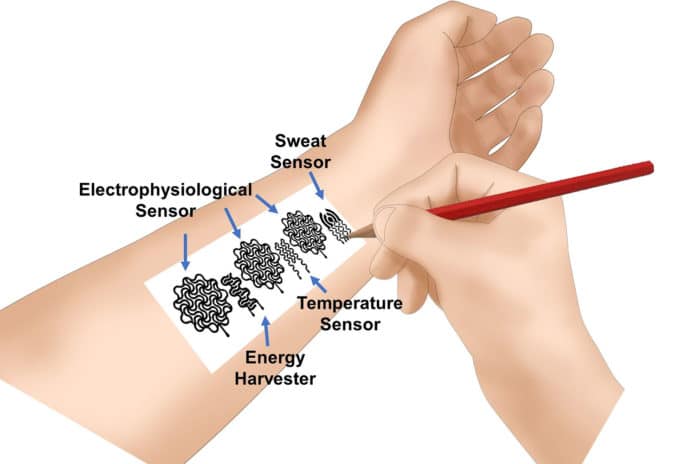Pencils and papers are found everywhere in our society and have been widely used for writing and drawing because they are easy to use, low-cost, widely accessible, and disposable. However, their applications in emerging skin-interfaced health monitoring and interventions are still not well explored.
A team of engineers from the University of Missouri has published a study, which demonstrates that the simple combination of pencils and paper could be used to create devices to monitor people’s health. The pencil–paper-based on-skin biomedical electronic device is based on the possibilities of conduction that graphite in the pencil offers.
The team found that the pencils whose core is made of more than 90% graphite are able to conduct a high amount of energy created from the friction between paper and pencil caused by drawing or writing. Graphite can serve as conductive traces and sensing electrodes, while a sheet of paper provides flexible, supportive substrates for the component to maintain an on-skin connection with a person’s body.
According to the team, the best results are obtained with pencils having 93% graphite content. A biocompatible spray-on adhesive could also be applied to the paper to help it stick better to a person’s skin.
“The conventional approach for developing an on-skin biomedical electronic device is usually complex and often expensive to produce,” says Zheng Yan, an assistant professor in the College of Engineering. “In contrast, our approach is low-cost and very simple. We can make a similar device using widely available pencils and paper.“
The team says their approach has the potential to make a variety of pencil–paper-based on-skin electronic devices, including biophysical (temperature, biopotential) sensors, sweat biochemical (pH, uric acid, glucose) sensors, thermal stimulators. Moreover, the devices can perform real-time, continuous, and high-fidelity monitoring of a range of vital biophysical and biochemical signals from human bodies.
Importantly, the device is made of generally available items, which are also very cheap. The researchers said their discovery could have broad future applications in home-based, personalized health care. Furthermore, this low-cost, easily customizable approach could also allow scientists to conduct research at home, especially during the pandemics.
Besides, the paper can decompose in about a week, compared to many commercial devices that contain components that are not easily broken down.
The idea is certainly interesting! They say that their next step is to test more biomedical components.
Journal Reference:
- Pencil–paper on-skin electronics. DOI: 10.1073/pnas.2008422117
